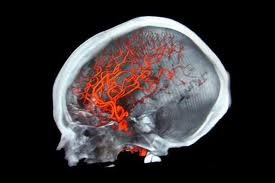Bacterial vaginosis
Definition :
Bacterial vaginosis is a type of vaginal inflammation that results from the overgrowth of one of several types of bacteria normally present in the vagina, upsetting the natural balance of vaginal bacteria.
Women in their reproductive years are most commonly affected by bacterial vaginosis, but any woman can experience the condition. Doctors don't know exactly why bacterial vaginosis develops, but certain activities, such as unprotected sexual intercourse or frequent douching, put you at higher risk of the condition.
Symptoms:
Bacterial vaginosis signs and symptoms may include:
When to see a doctor
You probably need to see your doctor if you have new vaginal symptoms and:
Bacterial vaginosis results from an overgrowth of one of several organisms normally present in your vagina. Usually, "good" bacteria (lactobacilli) outnumber "bad" bacteria (anaerobes) in your vagina. But if anaerobic bacteria become too numerous, they upset the natural balance of microorganisms in your vagina and bacterial vaginosis results.
Bacterial vaginosis can spread during sexual intercourse, but it also occurs in people who aren't sexually active.
Complications:
Generally, bacterial vaginosis doesn't cause complications. But under certain circumstances, having bacterial vaginosis may lead to:
To treat bacterial vaginosis, your doctor may prescribe one of the following medications:
Recurrence
Despite the effective treatments for bacterial vaginosis, recurrence of symptoms within three to six months is common. Researchers are exploring the treatment regimens for recurrent bacterial vaginosis, but there's no evidence to support one therapy over another. If your symptoms recur soon after treatment, make an appointment with your doctor to discuss treatment options, one of which is extended-use metronidazole therapy. A self-help approach is lactobacillus colonization therapy — which attempts to boost the number of "good" bacteria in your vagina and re-establish a balanced vaginal environment — possibly accomplished by eating certain types of yogurt or other foods containing lactobacilli.
Definition :
Bacterial vaginosis is a type of vaginal inflammation that results from the overgrowth of one of several types of bacteria normally present in the vagina, upsetting the natural balance of vaginal bacteria.
Women in their reproductive years are most commonly affected by bacterial vaginosis, but any woman can experience the condition. Doctors don't know exactly why bacterial vaginosis develops, but certain activities, such as unprotected sexual intercourse or frequent douching, put you at higher risk of the condition.
Symptoms:
Bacterial vaginosis signs and symptoms may include:
- Vaginal discharge that's thin and grayish white
- Foul-smelling "fishy" vaginal odor, especially after sexual intercourse
- Vaginal itching or irritation
- Pain during intercourse
- Burning during urination
- Light vaginal bleeding
When to see a doctor
You probably need to see your doctor if you have new vaginal symptoms and:
- You've never had a vaginal infection. Seeing your doctor will
establish the cause and help you learn to identify the signs and
symptoms.
- You've had vaginal infections before, but these symptoms seem different.
- You've had multiple sex partners or a recent new partner. You could
have a sexually transmitted infection. The signs and symptoms of some
sexually transmitted infections are similar to those of bacterial
vaginosis.
- You've tried self-treatment for a yeast infection with an over-the-counter anti-yeast medication and your symptoms persist, you have a fever, or you have a particularly unpleasant vaginal odor.
Bacterial vaginosis results from an overgrowth of one of several organisms normally present in your vagina. Usually, "good" bacteria (lactobacilli) outnumber "bad" bacteria (anaerobes) in your vagina. But if anaerobic bacteria become too numerous, they upset the natural balance of microorganisms in your vagina and bacterial vaginosis results.
Bacterial vaginosis can spread during sexual intercourse, but it also occurs in people who aren't sexually active.
Complications:
Generally, bacterial vaginosis doesn't cause complications. But under certain circumstances, having bacterial vaginosis may lead to:
- Preterm birth. In pregnant women, bacterial vaginosis is linked to premature deliveries and low birth weight babies.
- Sexually transmitted infections. Having bacterial
vaginosis makes women more susceptible to sexually transmitted
infections, such as HIV, herpes simplex virus, chlamydia or gonorrhea.
If you have HIV, bacterial vaginosis increases the odds that you'll pass
the virus on to your partner.
- Infection risk after gynecologic surgery. Having bacterial vaginosis may be associated with a greater chance of developing a post-surgical infection after procedures such as hysterectomy or dilation and curettage (D and C).
To treat bacterial vaginosis, your doctor may prescribe one of the following medications:
- Metronidazole (Flagyl, Metrogel-Vaginal, others).
This medicine may be taken orally — as a pill that you swallow — twice a
day for seven days. Metronidazole is also available for use topically,
as a gel that you insert into your vagina for five to seven days. To
avoid the potential for stomach upset, abdominal pain or nausea while
using this medication, stay away from alcohol for the duration of the
treatment.
- Tinidazole (Tindamax). This medication is taken
orally once a day for two to five days, depending on the prescription's
strength. Tinidazole has the same potential for stomach upset and nausea
as does oral metronidazole.
- Clindamycin (Cleocin, Clindesse, others). This medicine is available as a cream that you insert into your vagina for seven days. One effect of using clindamycin cream is that it may weaken latex condoms, and that effect persists up to five days after you stop using the cream.
Recurrence
Despite the effective treatments for bacterial vaginosis, recurrence of symptoms within three to six months is common. Researchers are exploring the treatment regimens for recurrent bacterial vaginosis, but there's no evidence to support one therapy over another. If your symptoms recur soon after treatment, make an appointment with your doctor to discuss treatment options, one of which is extended-use metronidazole therapy. A self-help approach is lactobacillus colonization therapy — which attempts to boost the number of "good" bacteria in your vagina and re-establish a balanced vaginal environment — possibly accomplished by eating certain types of yogurt or other foods containing lactobacilli.







.jpg)



















